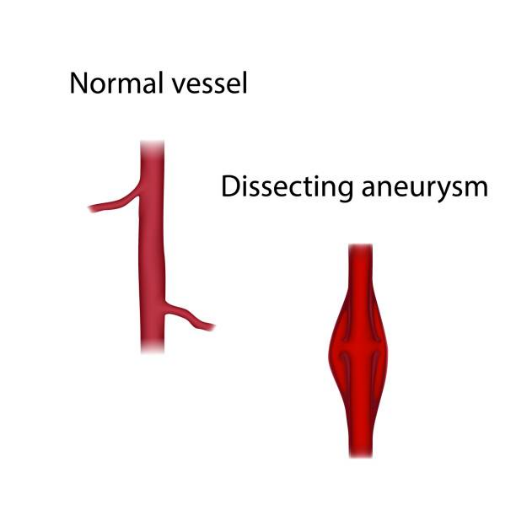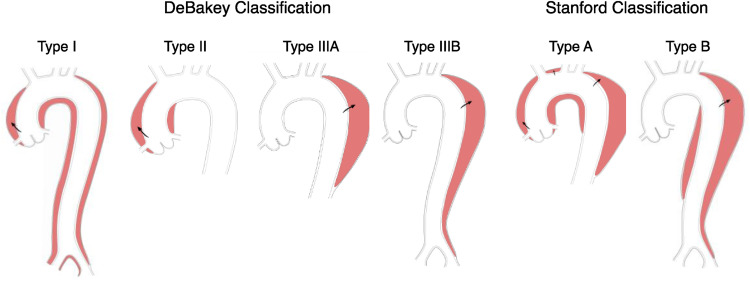 Know the Facts
Know the Facts
An Aortic Dissection is a tear in the aorta that typically occurs when the inner layer of the artery’s wall weakens. An untreated tear can enlarge, allowing blood to pass through the tear and into the middle layer of the vessel wall causing the layers to separate from one another. Aortic dissections can compromise blood flow to vital organs potentially causing a heart attack, kidney failure, stroke, paralysis, intestinal and lower extremity ischemia (inadequate blood flow). If left untreated, aortic dissections can rupture leading to life-threatening complications.
Risk Factors
Risk factors associated with acute dissection include male sex, age 60+, uncontrolled hypertension, atherosclerosis, cardiac surgery, aortic aneurysm, genetic diseases such as Turner syndrome, Marfan syndrome, Ehlers-Danlos, Loeys-Dietz syndrome, injury from an accident or structural heart problems.
Symptoms
Aortic dissection symptoms may be similar to other cardiovascular problems such as a heart attack. Pain described as severe, sharp, or tearing in the chest or upper back, sudden stomach pain, shortness of breath, stroke-like symptoms, weak pulse in one arm or thigh compared to the other, difficulty walking or leg pain.
Diagnosis
Physical exam, CT scan, Magnetic resonance angiogram (MRA)

Treatment
Medications, lifestyle modifications, endovascular repair or open repair
The first step towards treating an aortic dissection is blood pressure and heart rate control as well as pain management with medications. This helps prevent additional bleeding and reduces the risk of rupture. The treatment of an aortic dissection depends in part on where the dissection is located. Type A dissections are more common and dangerous, they involve the part of the aorta where it exits the heart (ascending aorta), the tear may also extend into the lower abdomen (descending aorta) these are known as Type B dissections. Physicians will determine which treatment option is appropriate for you.
Lifestyle modifications and medications may be recommended as well as surgical options such as a thoracic endovascular aortic repair (TEVAR).

